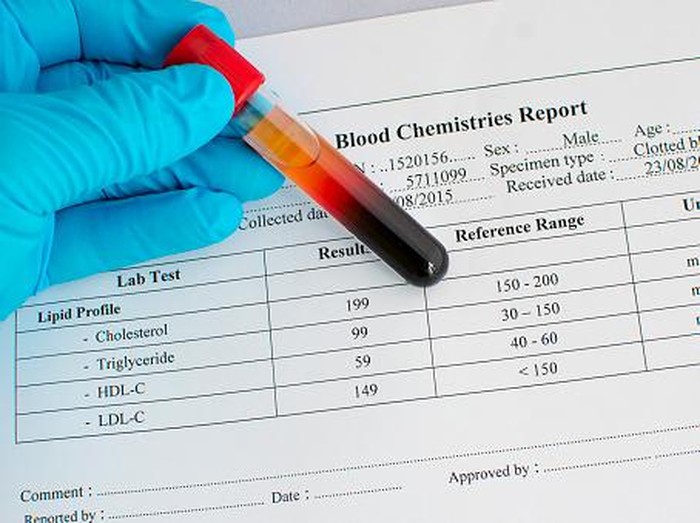At present, high cholesterol problem often occurs in the community, not only in the elderly group, but the productive age group also cannot escape from high cholesterol problem. High cholesterol is a manifestation of a high fat and cholesterol diet over a long period. Hypercholesterolemia is a cholesterol disorder measured by an increase in blood levels of more than 200 mg / dL. Most people do not realize this condition if they do not carry out regular blood tests, while hypercholesterolemia can cause narrowing of blood vessels and result in strokes. The human body’s management naturally produces cholesterol about 60% -75% cholesterol, and 25% -45% comes from dietary cholesterol. However, excessive consumption of cholesterol and fat can cause cholesterol buildup in the blood.
The development of a screening tool that can measure cholesterol intake quickly can help individuals and health workers assess cholesterol intake so that they can take preventive measures and hypercholesterolemia does not occur. The semi-quantitative food frequency questionnaire (SQFFQ) method has been developed for a long time. However, no one aims to measure individual cholesterol intake, especially in the Indonesian population. SQFFQ must be validated before it can be used as a measuring tool. In addition to individual settings, this developed SQFFQ can also be used in epidemiological studies with large populations. This measuring tool is fast, easy, cheap, and has less burden for respondents, so that it is acceptable, especially to examine the relationship of cholesterol intake with specific health problems.
Method and results
The validity test was carried out on 30 elderly in the Jagir Public Health Center working area, Surabaya. The research was conducted in 2 stages; the first phase focuses on developing the SQ-FFQ tool, and the second stage measures the reliability and validity of the questionnaire. The development of the SQ-FFQ to estimate cholesterol intake was initially carried out by collecting several food items containing high cholesterol based on the Indonesian Food Composition Database, then sorting the availability of foodstuffs in the study area. We eliminated food items that were not available around the study site. Furthermore, a pre-test was carried out to test the SQ-FFQ that was developed first. If the intake of one or more food items is zero (0) grams, they will be removed from the SQFFQ questionnaire. The study on the reliability and validity of the SQFFQ screening tool was carried out over four weeks.
The results of the development of a cholesterol intake screening tool obtained 25 food ingredients that were entered into the final SQFFQ form and would be tested for validity. The strength of agreement in measuring cholesterol intake between 2 SQ-FFQ shows a result of 0.609, meaning that the SQ-FFQ we have shown good reliability. In other words, the agreement level between 2 SQFFQ fillings at different times is quite good. Furthermore, the SQFFQ also indicates good internal consistency. Not much different from the reliability test results, the SQFFQ validity test that was developed also showed satisfactory results. The developed SQFFQ was validated by the food record estimation method for 6 days. The validity test results showed that the cholesterol intake assessed using a repetitive food diary was higher than the SQFFQ estimate. Good agreement was also found in estimates of mean cholesterol intake.
The SQFFQ cholesterol intake screening tool developed by a lecturer in department of nutrition, Faculty of Public Health, Universitas Airlangga, for assessing cholesterol intake is proven to have good reliability and validity. It can be used as a useful instrument. However, the validity can be increased by eliminating food items that are still very rarely consumed in the future. Further studies to validate this SQ-FFQ to populations of different age groups using biochemical indicators (total cholesterol, triglycerides, LDL or HDL) could be undertaken to gain better understanding.
Authors: Nindya, T. S., Mahmudiono, T., & Rachmah, Q. (2021). The estimation of cholesterol intake in elderly: reliability and validity of short, Semi-Quantitative Food Frequency Questionnaire (SQ-FFQ). Journal of Nutrition and Health, 54(1), 95-103.
Articles can be found at the following link: https://pc.e-jnh.org/pdf/10.4163/jnh.2021.54.1.95
Author: Qonita Rachmah





